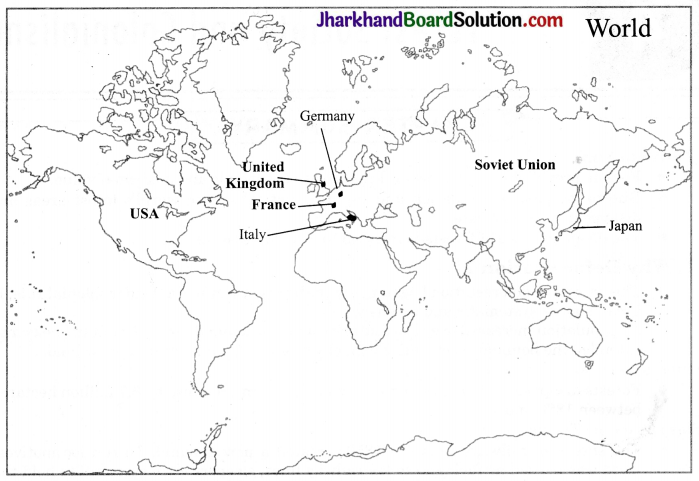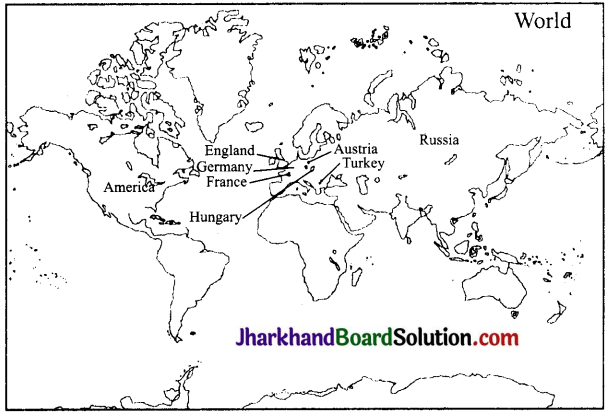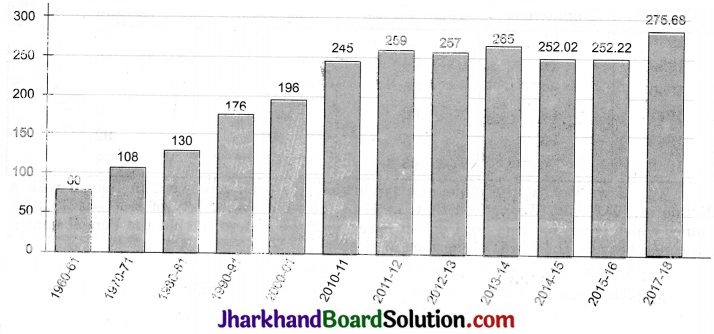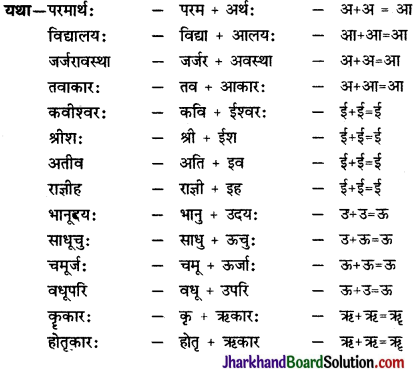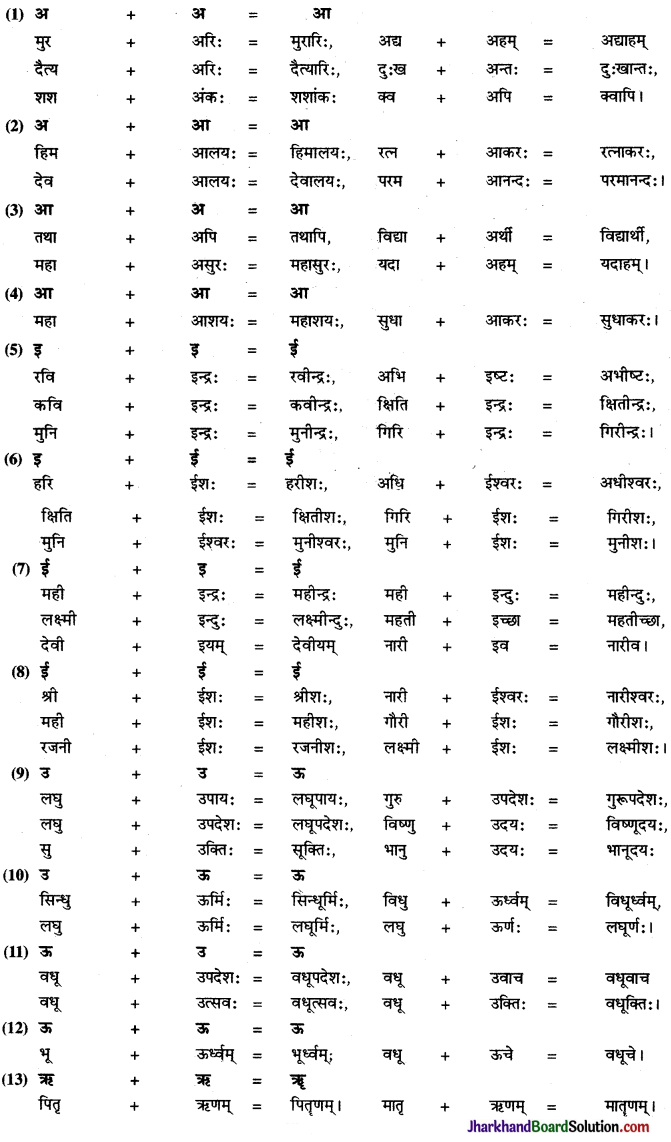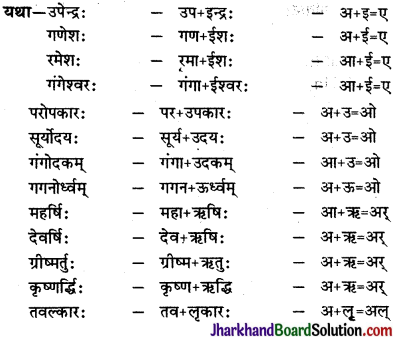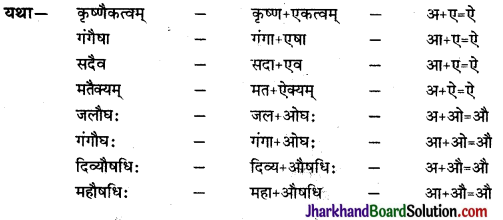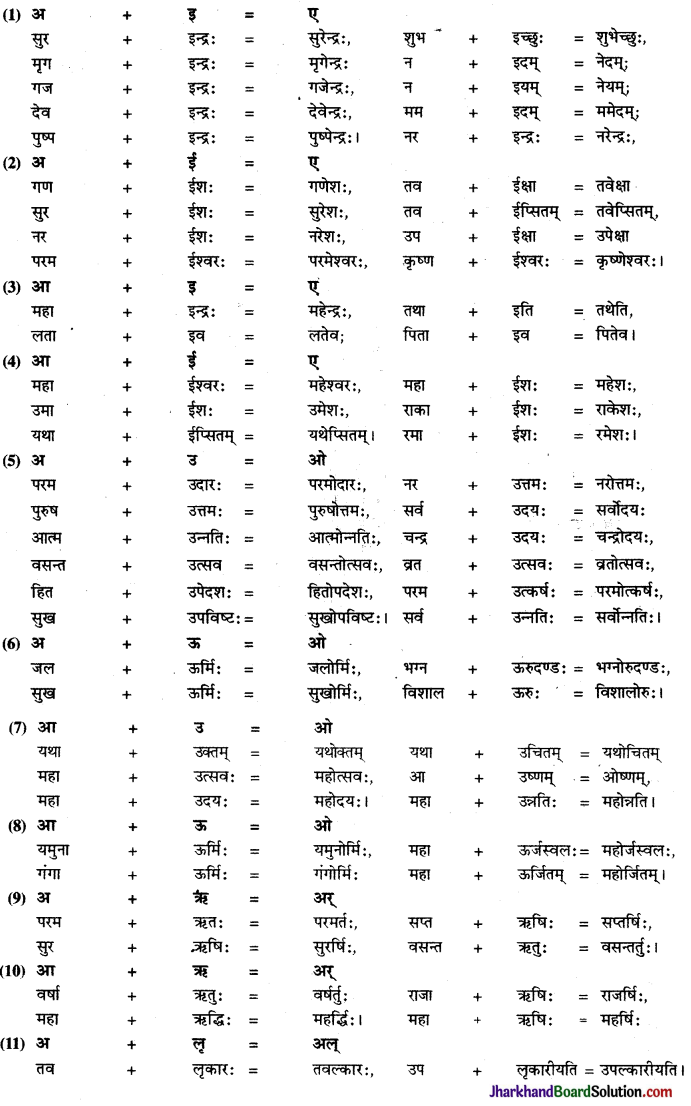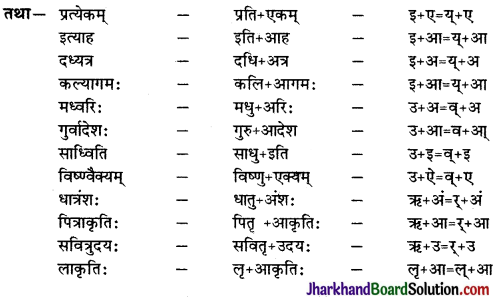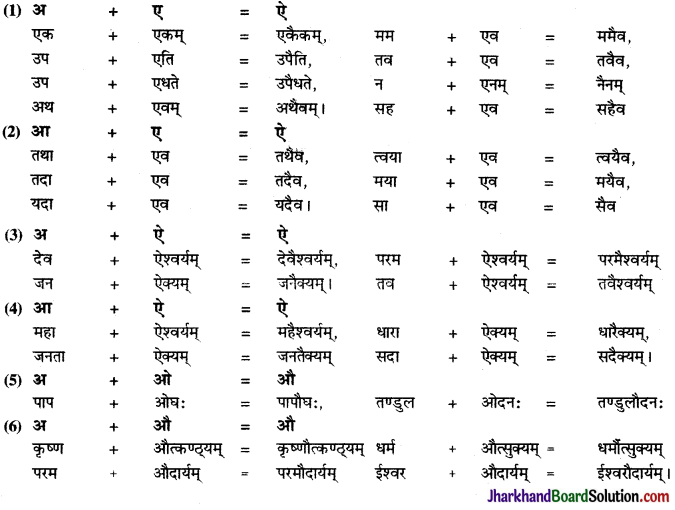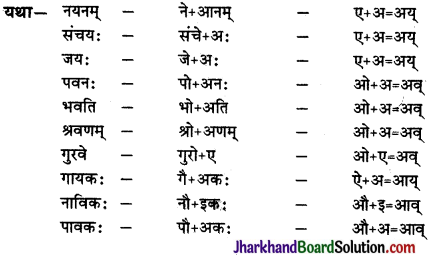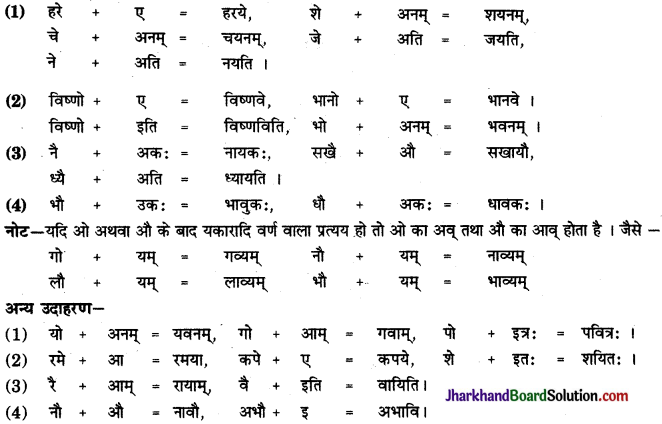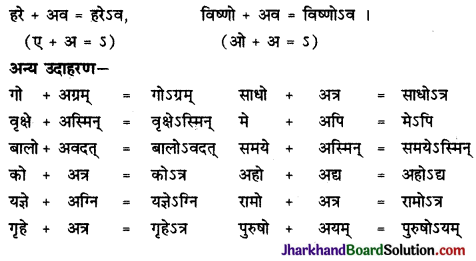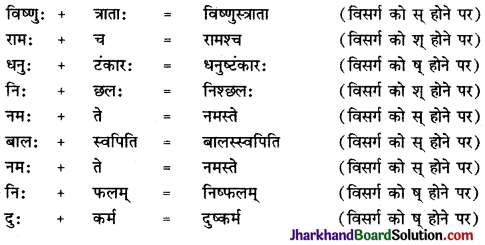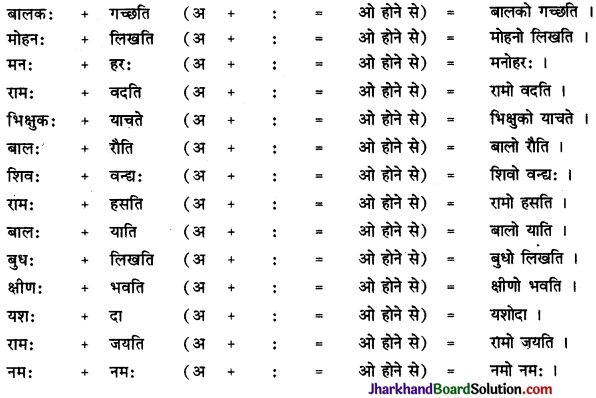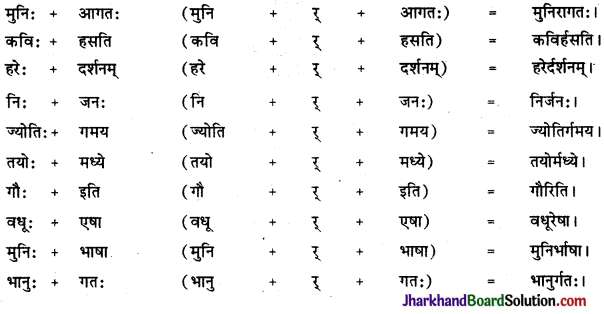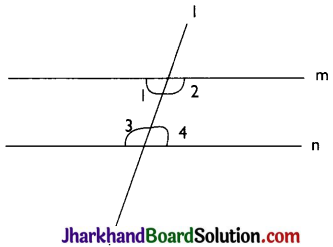JAC Board Class 9th Social Science Important Questions History Chapter 1 The French Revolution
I. Objective Type Questions
1. Who ascended the throne of France during the French Revolution?
(a) Louis XVI
(b) Louis X
(c) Nepoleon
(d) Nicholas II.
Answer:
(a) Louis XVI
2. The book “The Social Contract” was written by :
(a) Montesquieu
(b) Rousseau
(c) Jean Pal Marat
(d) Nepoleon Bonaparte.
Answer:
(b) Rousseau
3. When did French Revolution occur?
(a) 1769
(b) 1780
(c) 1789
(d) 1947
Answer:
(c) 1789
4. Who wrote the ‘Declaration of the Rights to Women and Citizens?
(a) Louis X
(b) Marat
(c) Robespierre
(d) Olympe de Gouges.
Answer:
(d) Olympe de Gouges.
5. When did Napoleon Bonaparte crown himself as Emperor of France?
(a) In 1804
(b) In 1815
(c) In 1789
(d) In 1849.
Answer:
II. Very Short Answer Type Questions
Question 1.
When did the French Revolution begin?
Answer:
The French Revolution began on 14th July 1789 with the storming of the Bastille prison just outside Paris.

Question 2.
When did Louis XVI ascend the throne of France?
Answer:
Louis XVI ascended the throne of France in 1774.
Question 3.
To which dynasty Louis XVI belonged?
Answer:
Louis XVI belonged to the Bourbon dynasty.
Question 4.
What was the main political reason of the French Revolution?
Answer:
The luxurious living of the despotic ruler and absence of any uniform system was the main political reason of the French Revolution.
Question 5.
Name the three ‘Estates’ into which the French society was divided before the revolution.
Answer:
- The First Estate-Clergy.
- The Second Estate-Nobility.
- The Third Estate-Common People.
Question 6.
Which estate of French society paid all taxes?
Answer:
The third estate paid all the taxes in French society.
Question 7.
Name the classes which formed the privileged estates.
Answer:
The clergy and the nobility constituted the privileged estates.
Question 8.
What was the tax levied by the Church on the peasants?
Answer:
Tithes was the special tax levied by the Church on the peasants.
Question 9.
What was the tax levied by the state called?
Answer:
The tax levied by the state was called Taille.

Question 10.
What is the name of the book written by John Locke?
Answer:
“Two Treatises of Government”.
Question 11.
Name the book written by Rousseau.
Answer:
“The Social Contract”.
Question 12.
Name the book written by Montesquieu.
Answer:
“The Spirit of the Laws”.
Question 13.
Who proposed a division of power?
Answer:
Montesquieu.
Question 14.
Name the important philosophers who influenced the French Revolution.
Answer:
Rousseau, John Locke and Montesquieu.
Question 15.
What inspired the political thinkers in France?
Answer:
The American constitution and its guarantee of individual rights inspired the political thinkers in France.
Question 16.
Who constituted the Estates General?
Answer:
The representatives of all the three Estates constituted the Estates General.

Question 17.
Name the body formed by the representatives of the Third Estate.
Answer:
National Assembly.
Question 18.
When and where was the formation for the National Assembly announced?
Answer:
The formation for the National Assembly was announced on June 20, 1789 in the hall of an indoor tennis court, in Versailles.
Question 19.
Name two important leaders of National Assembly.
Answer:
Mirabeau and Abbe Sieyes.
Question 20.
Explain the term ‘active citizens.
Answer:
Citizens who had the right to vote were called ‘active citizens.
Question 21.
What were the legacies of the French Revolution?
Answer:
Ideas of liberty, equality and fraternity were the legacies of the French Revolution.
Question 22.
Who wrote Marseillaise?
Answer:
It was composed by Roget de Lisle.
Question 23. When was Marseillaise sung for the first time?
Answer:
It was sung for the first time by the volunteers from Marseilles when they marched into Paris in April 1792.
Question 24.
Who were Sans-Culottes?
Answer:
The Jacobins came to be known as the Sans-Culottes, literally meaning ‘those without knee breeches’.
Question 25.
When was France declared a ‘Republic’?
Answer:
On 21 September, 1792 France was declared a ‘Republic’.
Question 26.
Which period of the French history is known as the Reign of Terror?
Answer:
The period from 1793 to 1794 is known as the Reign of Terror.

Question 27.
What was known as ‘Directory’?
Answer:
The term ‘Directory’ refers to the executive board made up of five members.
Question 28.
What was the route of triangular slave trade?
Answer:
The triangular slave trade was executed between the continents of Europe, Africa and America.
Question 29.
When was the slave trade abolished in the French colonies?
Answer:
The slave trade was abolished in 1848 from the French colonies.
Question 30.
When did Napoleon crown himself Emperor of France?
Answer:
In 1804, Napoleon crowned himself Emperor of France.
Question 31.
When and where was Napoleon finally defeated?
Answer:
Nepoleon was finally defeated at the Battle of Waterloo in 1815.
Question 32.
Write the names of two Indians who responded to the ideas of Revolutionary France. Answer: Tipu Sultan and Raja Ram Mohan Roy.
III. Short Answer Type Questions
Question 1.
Describe briefly the incidents which took place in the morning of 14th July, 1789, in France.
Answer:
The following events took place in the morning of 14th July, 1789, in France.
- In the morning of 14th July, 1789, the King ordered his army to move into the city. There was a rumour that he ordered his army to open fire upon the citizens of Paris.
- 7000 men and women gathered in front of the town hall and decided to form a people’s militia.
- They broke into a number of government buildings in search of arms.
- A group of several hundred people stormed the fortress-prison, the Bastille, where they hoped to find hoarded ammunition.
- The crowd destroyed the Bastille, the Commander of the Bastille was killed and the prisoners released!
Question 2.
What were the political causes of the French Revolution?
Answer:
The political causes of the French Revolution were as follows:
- Emperor Louis XVI and his queen, Marie Antoinette, wasted money on their luxurious living and wasteful activities.
- The administration was corrupt and autocratic.
- The public money was lavishly spent by the Crown.
- The high posts were often sold. The Queen interfered in state appointments in order to promote her favourites. Her influence over the King proved disastrous to the country.
- The prisoners were treated with extreme severity.
- With legal decree, the king could confiscate the property of any of his subjects.

Question 3.
Explain the economic causes of the French Revolution.
Answer:
Economic Causes:
- Upon the accession of Louis XVI in 1774, he found an empty treasury. Under Louis XVI, France helped the American Colonies in their war for independence against Britain. This war added more than a billion livres to a debt that had already risen to more than 2 billion livres.
- France had to borrow money from other countries. These countries now began to charge 10 per cent interest on loans. The finances of the state were in a miserable condition.
- To meet its regular expenses such as the cost of maintaining an army, functioning of the court, running government offices or universities, the state was forced to increase taxes.
Question 4.
Explain the social division of France in the 17th century.
Answer:
In the 17th century, the French Society was divided into three groups, called Estates:
1. The First Estate:
It constituted the minority group of the clergymen and church-fathers who were the custodians of religion and conscience of man. They were the most venerated persons in the society and were exempted from all taxes.
2. The Second Estate:
It constituted the minority group of landlords, men of noble birth and aristocrats. This class also shared most of the privileges.
3. The Third Estate:
It comprised of the vast majority of the common masses which included the landless peasants, landless labour, servants, merchants, court officials, lawyers etc. This Estate lived in poverty and misery and paid all the taxes.
Question 5.
Write a brief account on the Third Estate.
Answer:
The Third Estate constituted of peasants which formed 90% of the French population comprising workers, professionals, businessmen and manufacturers. This Estate was the unprivileged section which enjoyed no political rights and social status, despite bearing the burden of the taxes. Within the Third Estate too, there were evident disparities in wealth and style. The professionals, businessmen and manufacturers formed the wealthier class, and had access to education. Many of the peasants were landless or did subsistence farming. The condition of peasants was not better. The heavy taxes, tithes, taille, feudal dues, indirect taxes, forced labour, coupled with bad harvests brought them on the verge of starvation.
Question 6.
What is subsistence crisis? Mention any two factors responsible for this in France.
Answer:
Subsistence crisis is an extreme situation where the basic means of livelihood are endangered.
Factors responsible for subsistence crisis were as follows:
1. The population of France rose from about 23 million in 1715 to 28 million in 1789. This led to a rapid increase in the demand for food grains. Production of grains could not keep pace with the demand. So the price of bread, which was the staple diet of the majority, rose rapidly.
Most workers were employed as labourers in workshops, whose owners fixed their wages. But wages did not keep pace with the rising prices. So, the gap between the poor and the rich widened.
2. The drought or hail were also responsible for this crisis.
Question 7.
Discuss the role of middle class in the French Revolution.
Answer:
The spread of industrial revolution led to the emergence of the middle class. It was the class of businessmen, traders, bankers, manufacturers, scholars etc. The middle class people led the revolution. They came forward with the slogan of liberty, equality and fraternity. They started a vigorous propaganda against the king and the nobility.
They raised their voice in favour of freedom of trade and removal of feudal barriers. They realised that as long as the feudal system prevails, the French society had no chance of moving forward on the road of prosperity as the feudal barriers were a serious obstruction to the growth of industrial capitalism.

Question 8.
What is known as the Tennis Court Oath?
Answer:
On 20 June, 1789, the representatives of the Third Estate assembled in the hall of an indoor tennis court in the grounds of Versailles. They declared themselves a National Assembly and swore not to disperse till they had drafted a constitution for France that would limit the powers of the monarch. They were led by Mirabeau and Abbe Sieyes. This incident is known as the Tennis Court Oath.
Question 9.
Write short notes on:
1. Charles Montesquieu
2. Mirabeau
3. Abbe Sieyes
Answer:
1. Charles Montesquieu:
Charles Montesquieu was a nobleman by birth. He became a lawyer and a judge. In his book, “The Spirit of the Laws”, he criticised autocracy and praised the democratic republic. He exposed the evils prevailing in the ‘Old Regime’. He popularised the theory of the division of powers.
2. Mirabeau:
Mirabeau belonged to a noble family. He wanted to do away a society of feudal privileges. He brought out a journal and delivered powerful speeches at Versailles.
3. Abbe Sieyes:
Abbe Sieyes was a priest who wrote an influential pamphlet called “What is the Third Estate”.
Both of them were representatives of the Third Estate and drafted the constitution for France.
Question 10.
How did France become a constitutional monarchy?
Answer:
In 1791, the National Assembly completed the draft of the constitution. Its main object was to limit the powers of the monarch.
The powers, instead of being concentrated in the hand of the monarch, were now separated and divided between the Legislative the Executive and the Judiciary. The constitution also declared that it was the duty of the state to protect each citizen’s natural rights. In this way, France became a constitutional monarchy.
Question 11.
Describe any three features of the constitution of France drafted in 1791.
Answer:
Following were the three features of the constitution of France drafted in 1791 :
- France became a constitutional monarchy with the King’s powers being reduced drastically by distributing them between three institutions called the Legislature, the Executive and the Judiciary.
- The constitution vested the power to make laws in the National Assembly, which was indirect elected.
- Only men have 25 years and paying a certain minimum amount of tax were allowed to vote. The remaining men and all women remained passive citizens.

Question 12.
Describe the period of Reign of Terror.
The period from 1793 to 1794 is referred as the Reign of Terror. It was known as Reign of Terror because of the following reasons:
- Jacobin ruler Robespierre followed a policy of severe control and punishment.
- All those whom he saw as being ‘enemies’ of the republic-ex-nobles and clergy, members of other political party, even members of his own party who did not agree with his methods-were arrested, imprisoned and then tried by a revolutionary tribunal. If the court found them ‘guilty’, they were guillotined.
- Meat and bread were rationed. Peasants were forced to transport their grain to the cities and sell it at prices fixed by the government. The use of more expensive white flour was forbidden; all citizens were required to eat the plain d’egalite equality bread a loaf made of whole wheat.
- Robespierre pursued his policies so relentlessly that even his supporters began to demand moderation.
Question 13.
What changes were seen in the regime of Robespierre’s government?
The following changes were seen in the regime of Robespierre’s government.
- Robespierre’s government issued laws placing a maximum ceiling on wages and prices meat and bread were rationed.
- Peasants were forced to transport their grain to the cities and sell it at fixed prices by the government.
- The use of more expensive white flour was for bidden and all citizens were forced to eat the equality bread i.e., a loaf made of whole wheat.
- Instead f the traditional Monsieur (sir) and Madame (madam), all french men and women were called as Citoyen and Citoyenne (citizen).
- Churches were also shut down and their buildings were converted into barracks ox ffices.
Question 14.
Write a note on France ruled by Directory.
Answer:
With the fall of Jaci an government in 1794, political power went into the hands of the wealthier middle class. A new constitution was introduced in 1795 which denied the right to vote to non-propertied sections of the society. It provided for two elected legislative councils. Legislative councils appointed an executive made of five members called the Directory.
Thus, the executive powers vested in the hands of Directory, whereas the power of making the laws vested in the Legislature. The Directors were expected to restore law and order in the country. This, however, they failed to do.
Question 15.
What was the condition of women in France before the revolution?
Or
Describe the condition of women of the Third Estate in France during the old Regime. The condition of the women in France before the revolution was as follows:
- All the women were classified as passive citizens. They did not have Voting Rights.
- They worked as Seamstresses or Laundresses, sold flowers, fruits and vegetables at the market or worked as domestic servants.
- Their wages were lower than those of men.
- They looked after their children, did the cooking, fetch water and queued up for bread.
- Most women did not have access to education or job training, only daughters of wealthy parents could study at a convent, after which they were married off.

Question 16.
Discuss the impact of abolition of censorship in France.
Answer:
- Before the revolution, all written materials could be published only after the approval of the king. But immediately after the revolution, keeping in mind the liberty and equality principle, the censorship was abolished.
- After the abolition of censorship, now the press was free. Freedom of the press meant that opposing views of events could be expressed. Political philosophers and writers were free to express their views.
Long Answer Type Questions
Question 1.
Describe any five causes for the empty treasury of France under the rule of Louis XVI.
Answer:
In 1774, Louis XVI of the Bourbon family of Kings ascended the throne of France. He found an empty treasury. The main five causes for it were:
- Long year of wars had drained the financial resources of France. The condition became even worse when under Louis XVI, France helped the 13 American colonies to gain independence from Britain.
- The King’s court at the immense palace of Versailles required huge amount of money for its maintenance.
- Taxes were levied only on the third estate, and the rich first and second estates were exempted from paying taxes.
- The war with Britain added more than a billion livres (unit of currency in France) to a debt that had already risen to more than two billion livres.
- Lenders who had given the state credit began to charge ten percent interest on the existing loans. So the French government was obliged to spend an increasing percentage of its budget on interest payment alone.
Question 2.
Explain the role of philosophers in the French revolution.
Answer:
France, in the 18th century, had many revolutionary thinkers. Among them, Rousseau and Montesquieu were prominent. Their revolutionary ideas encouraged people to fight for their rights. They exposed the inefficiency of the monarch and his government.
- John Locke propounded the ideas refuting divinity and absolute rights of monarchs.
- Montesquieu’s philosophy outlined constitutional monarchy and division of powers.
- Rousseau asserted the doctrine of democracy and popularized sovereignty.
He believed that government should be based on the consent of the governed. Thus, the ideas of the philosophers were a direct attack on privileges and feudal rights which protected the upper classes. They helped to rouse the people from inactivity and instilled in them a desire to root out social inequalities and set up a government responsive to their need. They played a vital role in focusing the discontent and bringing about the Revolution.
Question 3.
Describe the immediate causes of the outbreak of the revolt in France in 1789.
Answer:
The immediate causes of the outbreak of the revolt in France in 1789 The following two events are its immediate causes:
1. Demand for Rights:
The 18th century France witnessed the emergence of a new social group ‘The Middle Class’. The third estate was represented by this class and they wanted each member in the Estates General to have one vote. The King rejected the proposal.
2. Price Rise:
A severe winter came and there was a bad harvest. The price of bread which was the staple food of common people increased significantly. Sometimes, bakers exploited the situation and increased the prices by hoarding. After spending long hours in queues, crowds of angry women raided the shops.
At the same time, King Louis XVI ordered the troops to move into Paris on 14th July 1789. An angry crowd destroyed the fortress prison of Bastille in the country side, peasants seized hoes and pitch forks and attacked chateaux. In this way, revolution spread all over France.

Question 4.
What landmark decisions were taken by the National Assembly led by the third
estate on the 4th August, 1789.
Answer:
On 20 June 1789, the representatives of the third estate declared themselves as a National Assembly. They drafted a constitution for France which resulted in the following changes:
- The representatives of the third estate discarded the power of absolute monarchy.
- On 4th August 1789, the National Assembly passed a decree, abolishing the feudal system of obligations and taxes.
- Members of the clergy were forced to give up their privileges.
- Tithe, a tax levied by the Church, comprising one-tenth of the agricultural produce, was abolished and lands owned by the church were also confiscated.
- As a direct consequence of these measures taken by the government, the government acquired assets worth at least two billion livres.
- France became a constitutional monarchy. Powers were now separated and assigned to three different institutions i.e., the Legislative, the Executive and the Judiciary.
- The constitution began with a Declaration of the Rights of Man and Citizen which established right to life, freedom of speech, freedom of opinion and equality before law as ‘natural and inalienable’ rights. It was the duty of the state to protect these rights.
Question 5.
What was the Declaration of the Rights of Man and Citizen?
Answer:
The constitution of 1791 began with a Declaration of the Rights of Man and Citizen. Its main features were as follows:
- Men are born and remain free and equal in rights.
- The aim of every political association is the preservation of the natural and inalienable rights of man; these are liberty, property, security and resistance to oppression.
- The source of all sovereignty resides in the nation; no group or individual may exercise authority that does not come from the people.
- Liberty consists of the power to do whatever is not injurious to others.
- The law has the right to forbid only such actions that are injurious to society.
- The law is an expression of the general will. All citizens have right to participate in its formation, personally or through their representatives. All citizens are equal before it.
- No man may be accused, arrested or detained, except in cases determined by the law.
- Every citizen may speak, write and print freely, he must take responsibility for the abuse of such liberty in cases determined by the law.
- For the maintenance of the public force and for the expenses of administration, a common tax is indispensable, it must be assessed equally on all citizens in proportion to their means.
- Since property is a sacred and inviolable right, no one should be deprived of it, unless a legally established public necessity requires it. In that case, a just compensation must be given in advance.
Question 6.
Explain the main course of the French Revolution of 1789.
1. Assembly of the Estates:
On 5th May, 1789, Louis XVI called an assembly of the Estates General to pass proposals for new taxes. Voting in the Estates General in the past had been conducted according to the principle that each Estate had one vote. This time too, Louis XVI was determined to continue with the same practice.
But members of the Third Estate demanded that voting now should be conducted by the assembly as a whole, where each member would have one vote. When the King rejected this proposal, members of the Third Estate walked out of the assembly in protest.
2. National Assembly:
The representatives of the Third Estate viewed themselves as spokesman for the whole French nation. On 20th June, they assembled in the hall of an indoor tennis court in the grounds of Versailles. They declared themselves a National Assembly, and swore not to disperse till they had drafted a constitution for France that would limit the powers of the monarch.
3. Turmoil in France:
While the National Assembly was busy at Versailles in drafting the constitution, the rest of France seethed with turmoil. Due to bad harvest, there was shortage of food, and there was also rumour that bands of brigands were on their way to destroy the ripe crops. Scared peasants started attacking nobles, Louis XVI finally accorded recognition to the National Assembly.
4. France became a Republic:
In 1792, the Jacobins held the king as hostage and declared to form a new government. The newly-elected Assembly was called the Convention. On 21st September, 1792, it abolished the monarchy and declared France as a republic. The French Revolution popularised many symbols. Each symbol represents some basic values. Mention the symbols and related values.

Question 7.
Answer:
The symbol of French Revolution and their related values are stated in the points below:
- The broken chain: Chains were used to fetter slaves. A broken chain symbolised freedom from slavery.
- The bundle of rods or fasces: One rod can be easily broken, but not an entire bundle. It symbolises that strength lies in unity.
- The eye within a triangle radiating light: The all seeing eye stands for knowledge. The rays of the sun will drive away the clouds of ignorance. It depicts that knowledge removes ignorance.
- Snake biting its tail to form a ring: This type of ring has neither beginning or end. It is a symbol of eternity.
- Sceptre: It was a symbol of royal power. It depicted the power of autocracy.
- Blue-White-Red: These were the national colours of France. The use of these colours depicted nationalism.
- Red Phrygian cap: It was worn by a slave upon becoming free. It symbolises freedom from bondage of slavery.
Question 8.
Write any five points about the Jacobin club.
Answer:
Jacobins: A political club of people which was formed to discuss the government
policies and plan their own forms of action. The Jacobins club got its name from
the former convent of St. Jacobin Paris.
- The Jacobin club was the most successful club of France, which got its name from the former convent of St. Jacob in Paris.
- The members of the Jacobin club belonged mainly to the less prosperous sections of society. They included small shopkeepers, artisans such as shoemakers, pastry cooks, watch-makers, printers, as well as servants and daily wage workers.
- Their leader was Maximilien Robespierre.
- These Jacobins decided to start wearing long-striped trousers and came to be known as the Sans Culottes, literally meaning those without knee breeches. In addition, Sans-Culottes men wore the red cap that symbolised liberty.
- They were of the opinion that the revolution had to be carried further, as the Constitution of 1791 gave political rights only to the richer sections of the society.
Question 9.
Explain the condition of women in France after the revolution.
Answer:
From the very beginning, women were active participants in the revolution which brought about so many important changes in French society. They hoped that their involvement would pressurise the revolutionary government to introduce measures
to improve their lives.
1. Condition of women after the revolution:
During the revolution, women started their own political clubs and newspapers in order to discuss and voice their interest. About 60 womens’ clubs came up in different cities in which The Society of Revolutionary and Republican Women was the most famous.
2. One of their main demands was that women should enjoy the same political rights as men. They demanded the right to vote, to be elected to the Assembly and to hold political offices.
3. In the early years, the revolutionary government introduced laws that helped to improve the lives of women. They were as follows:
(a) Schooling was made compulsory for all girls.
(b) Their fathers could no longer force them into marriage against their will.
(c) Marriage was made into a contract entered into freely arid registered under civil law.
(d) Women could now get training for jobs.
(e) Women’s struggle for equal political rights, however continued. It was finally in 1946 that women in France won the right to vote.

Question 10.
State the basic rights set forth in the Olympe de Gouges’ Declaration.
Answer:
The basic rights set forth in Olympe de Gouges’ Declaration were as follows:
- Woman is born free and remains equal to man in rights.
- The goal of all political associations is the preservation of the natural rights of women and men. These rights are liberty, property, security, and above all, resistance to oppression.
- The source of all sovereignty resides in the nation, which is nothing but the union of woman and man.
- The law should be the expression of the general will; all female and male citizens should have a say either personally or by their representatives in its formulation; it should be the same for all. All females and males are equally entitled for all honours and public employment according to their abilities and without any other distinction than that of their talents.
- No woman is an exception. She should be accused, arrested and detained in cases determined by law. Women, like men, should obey this rigorous law.
Question 11.
How was slavery abolished in France?
Answer:
- One of the most revolutionary social reforms of the Jacobin period was the abolition of slavery in the French colonies.
- The slave trade began in the seventeenth century.
- The exploitation of slave labour made it possible to meet their growing demand in European market for sugar coffee and indigo.
- Port cities like Bordeaux and Nautes owned their economic prosperity to the
flourishing slave trade. - Throughout the 18th century, there was little criticism of slavery in France.
- The National Assembly held long debates about whether the rights of man should be extended to all French people including those in the colonies. But it did not pass any laws, fearing opposition from businessmen whose income depended on the slave trade.
- It was finally the Convention, which, in 1794, legislated to free all slaves in the French overseas possessions. This, however, turned out to be a short-term measure.
- Ten years later, Napoleon re-introduced slavery.
- Finally, it was abolished from French colonies in 1848.
Question 12.
How did the Revolution affect the everyday life of the French people?
Answer:
The French Revolution affected the everyday life of the French people in the following ways:
- Revolutionary ideas of equality and liberty transformed the clothes people wore, the language they spoke and the books they read.
- With the abolition of censorship in 1789 and the Declaration of the Rights of Man and Citizen in 1791, freedom of speech became a natural right. This led to the growth of newspapers, books, pamphlets and printed pictures.
- Freedom of the press enabled voicing of opinions.
- Art flourished in the form of paintings, plays, songs, and festive processions.
- Visual and oral artforms enabled even the common man who could not read and write to relate with the ideas of liberty, equality and justice.

Question 13.
Compare the political, economic and social conditions of France before and after the revolution.
| Before Revolution | After Revolution |
| (a) Political Conditions: | 1. France became a Republic. |
| 1. France was under the rule of a monarch, Louis XVI | 2. Political powers were given common masses. |
| 2. All the political powers were in the hand of the first two Estates. | 1. Taxes were levied according to the income and wealth. The right to vote was linked to taxes. |
| (b) Economic Conditions: | 2. The economic condition government improved. |
| All the taxes were paid by the people of the Third Estate. The members of the first two Estates were exempted from all the taxes | 1. All were given equal irrespective of the Estates. |
| The government was under heavy debt. | 2. The censorship on written material and cultural activities was lifted, now all were free to write and speak |
| (c) Social Conditions: | After Revolution |
| People of Third Estate were discriminated. | 1. France became a Republic. |
| All the written materials and cultural activities could print only after an approval from the King. | 2. Political powers were given common masses. |
Map Work
Question 1.
Locate following on the map of France: Bordeaux, Nantes, Paris, Marseilles.
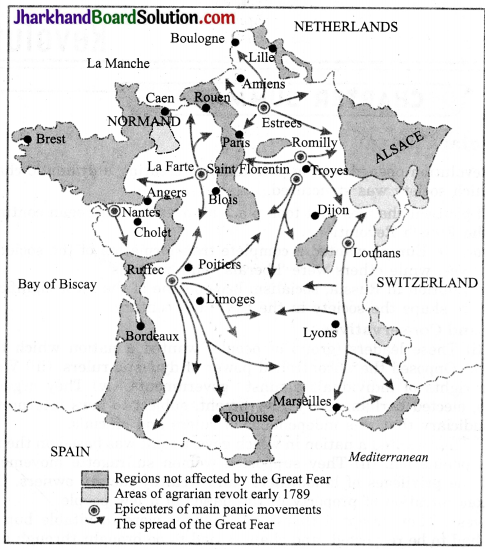
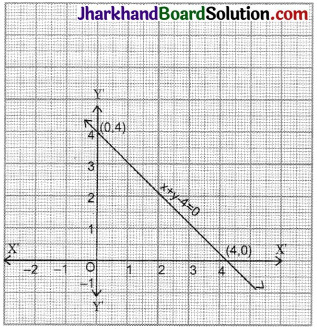
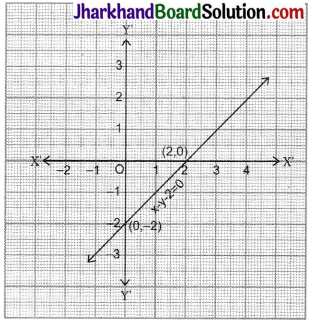
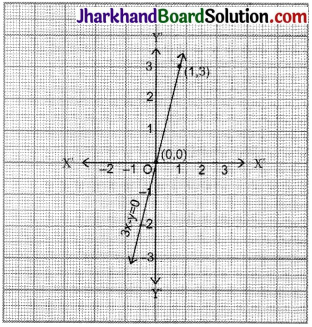

![]()
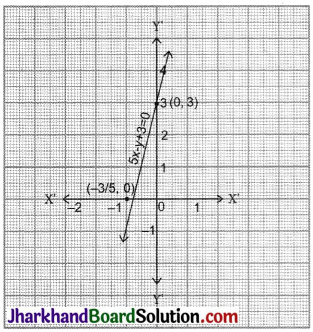
![]()
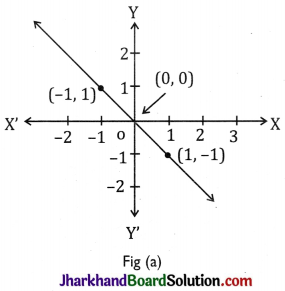
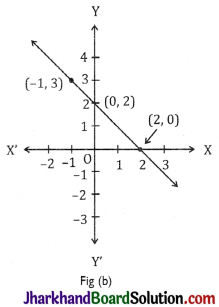
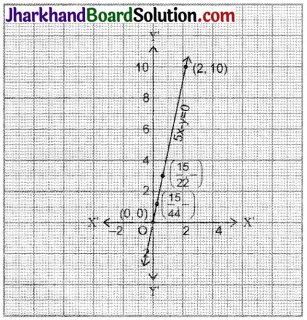

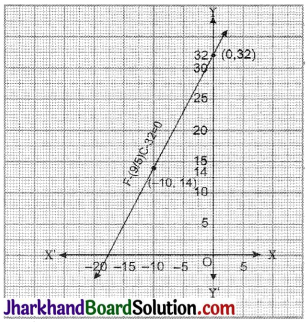
![]()
